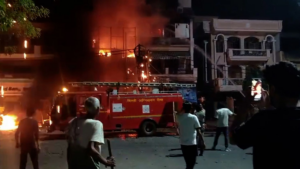On February 26, a significant fire broke out at Nayak Hospital in central Delhi, necessitating the evacuation of more than 50 people, including patients and staff, from the seven-story emergency block. This incident adds to a series of similar occurrences over the past year, including the rescue of 20 infants from a hospital in Dwarka and the evacuation of over 100 patients following a fire in the endoscopy unit at AIIMS. Over the last two years, There has been 66 Delhi hospital fires, with 30 reported in 2022 and 36 the previous year.
Atul Garg, the director of Delhi Fire Service, highlighted that responding to Delhi hospital fires is among the most challenging tasks for their department. Fire officials underscored the necessity of additional personnel and time to evacuate patients while simultaneously battling the blaze. When a hospital reports a fire, the fire services dispatch the maximum number of rescue vehicles, recognizing the high potential for many individuals to be affected. The presence of patients with varying mobility levels complicates the evacuation process, requiring customized emergency plans. The challenge becomes even more daunting when dealing with pediatric hospitals.
“Unlike typical fire rescues, firefighters cannot use ladders or physically lift people. This necessitates careful planning between staff and responders to ensure patient safety throughout the evacuation, prioritizing well-being and minimizing harm,” Garg explained.
Fire officials noted that many hospitals have inadequate arrangements, including the need for wider staircases. When hospitals apply for a non-objection certificate from the fire department, they are instructed to build staircases with sufficient width to facilitate the easy evacuation of patients on stretchers during a rescue.
Another fire official emphasized the importance of compartmentation on every hospital floor, allowing for the swift relocation of patients during an emergency. “During a fire, there are only five to six minutes to rescue trapped people. Therefore, there is a need for compartmentation,” the official stated.
Compartmentation is a building design and construction technique that effectively manages risks by dividing a building into separate sections using fire-resistant materials. The official also stressed the necessity of proper smoke evacuation passages in hospitals to remove smoke buildup during fire incidents.













